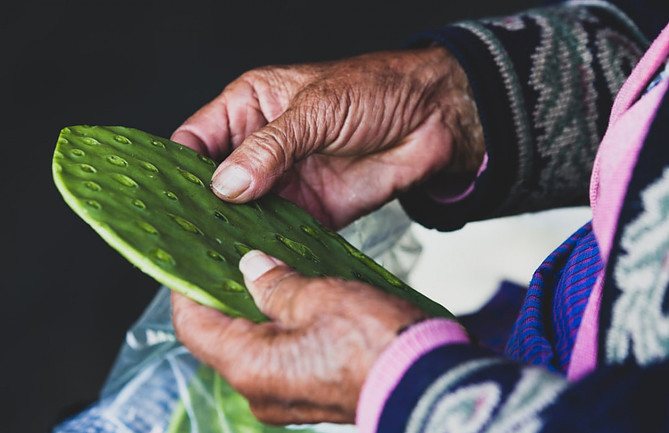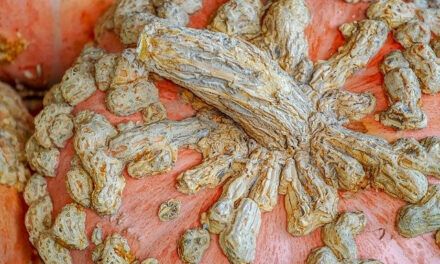Is nopal cactus good for diabetes? Can nopal cactus give any clinically proven benefits to people with prediabetes or diabetes?
Used as a medicinal plant in traditional medicine and touted as a superfood for its anti-inflammatory, antimicrobial, hypoglycemic (sugar-lowering) and neuroprotective properties, there are many confusing answers about nopal cactus and diabetes.
This article discusses more the uses and benefits of the nopal cactus and its fruit, especially in relation to diabetes.
Both the pads and the fruits of nopal cactus are consumed because both are believed to be high in antioxidants, dietary fiber, mineral and vitamin content which have been proven to have a lot of health benefits.
Most bragged about health benefits are:
- blood sugar lowering effect in type 2 diabetic patients
- promote treating high cholesterol
- help to reverse obesity
- fighting viral infection
- improving digestion
- protecting the immune system
- reducing oxidative stress and eliminating alcohol hangover
The leaves, stems, towers ad fruits can be eaten raw, boiled/grilled, roasted, juiced or made into a jam, jellies and candies.
As noted, there are many questions to discuss in this article. But, before anything, let’s find out what nopal cactus really is…
What is Nopal Cactus?
Nopal cactus is edible cactus that belong to the genus opuntia spp. They are the most abundant members of the cactaceae family.
These edible cactus are known by many names, such as nopales, prickly pear cactus, cactus pad, opuntia, and others.
It is an evergreen vegetable believed to be native to the desert region of Mexico but also found in Europe, some parts of Southwestern America and the Mediterranean. When these plants grow, it produces green thorny pads and red, orange, lime, purple or green fruits.
Nopal Cactus Pads
The pads known as nopales, are modified stems of the cactus plant. They are green, thick, oval, and flat. They are eaten as vegetables and are one of the main ingredients, of Mexican cuisine. Their soft pads are known as nopalitos.
Nopales are consumed after removing the stronger and sharper thorns. They can be consumed either raw by including them in your salads and smoothies or cooked by adding them to your scrambled eggs and tacos.
Nopal cactus can also be made into smoothies, jam, tea, and juice. They are nutritious, rich in dietary fiber and believed in providing a lot of health benefits.
Nopales have a low glycemic index, and are believed to help decrease the level of glucose in the blood.
Nopal Cactus Fruit
The red fruits known as the picky pear fruit are small and round or oval, elongated berries that can be juiced.
It is rich in vitamin C, vitamin E, carotenoids, polyphenols, flavonoid compounds, taurine, and pigments.
Prickly pear fruits have been used for a long in traditional medicine to treat a lot of conditions such as glaucoma, ulcers, liver conditions, dyspnea (short in-breath), and wounds.
Nopal cactus is a good source of fiber. Some studies have shown it can help to reduce blood glucose and cholesterol levels.
Forms of Nopales
Aside from eating the pads and fruits directly, nopales are also widely available as canned, pickled or in the form of dietary supplements. These dietary supplements are available in capsules, extracts, and powder form.
Nutritional content (Raw)
|
Amount per 100g |
% daily value | |
|
Calories |
16 | |
|
Energy |
66KJ | |
|
Water |
94.12 g | |
|
Cholesterol |
0 g |
0% |
|
Total fat |
0.1 g |
0% |
|
Saturated fat |
0 g |
0% |
|
Total carbohydrates |
3.3 g |
1% |
|
Dietary fibre |
2.2 g |
5.5% |
|
Sugar |
1.1 | |
|
1.32 g |
2% | |
|
Total fat |
0.09 g |
<1% |
|
21 mg |
1.5% | |
|
Potassium |
257 mg |
5% |
|
Calcium |
164 mg |
16% |
|
Iron |
0.59 mg |
2% |
|
52 mg |
13% | |
|
Vitamin C |
9.3mg |
15.5% |
|
Folate |
3ug |
<1% |
|
Niacin |
0.41mg |
2.5% |
|
Pantothenic acid |
0.17mg |
3% |
|
Pyridoxin |
0.07mg |
6% |
|
Vitamin K |
5.3ug |
4.4% |
|
Vitamin B6 |
0.07 mg |
5% |
|
Riboflavin |
0.04mg |
3% |
|
Thiamine |
0.01 mg |
1% |
|
Vitamin A |
457 IU |
15% |
|
0.05 mg |
6% | |
|
Manganese |
0.46mg |
20% |
|
Phosphorus |
16 mg |
3% |
|
Zinc |
0.25 mg |
5% |
|
Selenium |
0.7ug |
1% |
|
Choline |
7.3 mg | |
|
Total saturated fatty acids |
0/016 g | |
|
Total monosaturated fatty acids |
0.018 g | |
|
Total polysaturated fatty acids |
0.05 g | |
|
Carotene-B |
250ug | |
|
Carotene-a |
48 ug |
Possible Benefits of Nopal Cactus – What Does Research Say?
Recently, there are a lot of compelling scientific evidence of the possible nutritional and health benefit of nopal cactus.
Nopales is rich in polyphenols, vitamins, polyunsaturated fatty acids and amino acids. Research has revealed that the compounds and derivatives of nopal cactus contribute to relevant biological activities such as anti-inflammatory, antioxidant, hypoglycemic, neuroprotective and antimicrobial properties.
This review emphasized the biological effects of each of the major components of cactus components in relation to their possible health benefits and therapeutic impacts.
1. It has antiviral properties
Research has revealed that Nopal cactus has antiviral properties which can fight against herpes simplex virus (HSV), respiratory syncytial virus (RSV), and HIV.
2. It protects nerve cells
Like every other cells in the body, nerve cells can be damaged. This can lead to sensory pain or insensitivity.
Nopal cactus can protect against nerve damage which can result in sensory loss and pain.
Nopal cactus contains quercetin, (+)-dihydroquercetin, and quercetin 3-methyl ether flavonoids in their stems and fruits, and another study revealed that these flavonoids could exhibit neuroprotective actions against oxidative injuries
3. Aids In Weight Loss
Nopal cactus is a low-calorie vegetable that contains fiber which, according to a 3 months of clinical research, can help to reduce body fat.
Fiber helps to curb appetite. A recent study shows that fiber can bind with dietary fat and reduce the absorption of fat. This results in low energy absorption and consequently weight loss.
4. Reduces cholesterol in the system
Nopales are rich in soluble fiber. This can help reduce cholesterol and reduce the risk of cardiovascular disease.
Also, a review of studies reveals that because nopales positive health effect which is attributed to its bioactive compounds, antioxidant, antioxidants and anti-inflammatory properties, it is believed that the consumption of noodle cactus can help to reduce total body cholesterol, low density lipoprotein (LDL) and triacylglycerols.
When the level of cholesterol is adequately reduced, that can improve overall health and wellness.
5. It may prevent hangovers
Nopal cactus may help to prevent hangovers. This is according to a study published in 2004, Scientific American Journal.
The study revealed that there is strong evidence that nopal cactus extract can reduce the severity of hangovers when taken before drinking.
6. It has an anti-diabetes and blood sugar lowering effect
Nopal cactus may have a blood sugar lowering effect. This is based on the results of a study carried out on type 2 diabetes patients in Mexico.
The study reveals that prick pear has hypoglycemic action in type 2 diabetic patients.
Also, a similar study also suggested that nopal cactus could be considered for the prevention and/or treatment of blood glucose and as a potential dietary supplement.
7. Has antioxidants and anti-inflammatory properties
Nopal cactus is high in antioxidants which can protect our cells from damage caused by free radicals and reduce oxidative stress.
A 2013 study found that nopal cactus can reduce oxidative stress. The bioflavonoid, which gives Nopal cactus its vibrant color acts as an antioxidant and also gives Nopal cactus its anti-inflammatory properties.
A 2018 study reveals that nopal cactus has anti-inflammatory properties which can help protect the immune system.
8. May improve digestion and relieve constipation
Nopales, due to its fiber and vitamin content, may help to improve digestive health and relieve constipation by adding bulk to bowel movement.
Also, recent research indicated that nopales aid in relieving constipation by regulating some hormones such as insulin and cortisol.
9. Protects The Heart From Heart-Related Diseases
Nopal cactus is rich in antioxidants, which according to research, can help to lower cholesterol levels which helps to improve blood circulation.
Its fiber content helps to strengthen the walls of the heart, which in turn, protects the heart adequately from heart-related diseases.
10. Good for blood pressure
Nopal cactus is a high potassium, low sodium food.
A 100g of prickly pear cactus contains about 195mg of potassium and 20mg of sodium.
According to a study published in the International Journal of Clinical Pharmacology, Therapy and Toxicology, a high potassium, low sodium diet can help to prevent high blood pressure and bring down your blood pressure if it is already high.
11. Improves the health of the skin
One of the major causes of skin aging is oxidative damage. The antioxidant and phytochemical properties of nopal cactus can help to fight against premature aging.
Nopal cactus also contains vitamin E, vitamin A, vitamin C, beta-carotene, omega-3 fatty acids, zinc, and selenium, which can help to maintain the natural glow of the skin and prevent cracked skin when consumed.
A 2013 study revealed that nopal cactus could be a good source of antioxidants that can be used in the cosmetic industry.
Possible Risks of Nopal Cactus – What Does Research Say?
Commercially bought nopal cactus may contain added or more sugar as some producers often mix the nopal juice with juice from other fruits such as pineapple and orange.
It is recommended that people with diabetes should consume fresh fruits instead of juice, as the fiber helps to slow down the rate at which sugar is released into the blood.
Also, buying fresh nopal juice may not be really safe as some vendors sell the juice without using any antibacterial or pasteurization processing.
A 2016 study published in the Journal of Microorganisms indicated that unpasteurized nopal juice might be contaminated with some pathogens such as E.coli, citrobacter and salmonella. So, it is important that the nopal and nopal juice you are taking is from a reputable source.
Potential Side Effects Of Nopal Cactus
Nopal cactus is generally considered to be safe with little side effects, especially when taken as food and not supplement.
The potential side effects of nopal cactus supplements are:
- Headache
- Bloating
- Diarrhea or an increase in stool
- Nausea
Is Nopal Cactus Good For Diabetes?
Obesity, high LDL and high blood sugar levels are factors that increase the risk of diabetes.
Nopal cactus is rich in fibre, antioxidants, and carotenoids. Nopal cactus can help to reduce the risk of developing type 2 diabetes and help manage diabetes because of its anti-diabetes properties.
Nopales can help to reduce oxidative stress, and consuming this plant can significantly drop the blood sugar level, regulate insulin, and glucagon secretion.
It can aid in weight loss too.
It can lower blood cholesterol which reduces the risk or prevent high blood pressure. This can reduce the risk of cardiovascular diseases, which is one of the complications of diabetes.
Can Cactus Help Lower Blood Sugar?
Nopales have a blood sugar lowering effect.
As noted, it is rich in fiber and pectin, which slows down the absorption of sugar in the stomach and intestine, and by so doing, it lowers blood glucose levels.
How Would Nopal Cactus Interact With Diabetes Medication?
Although nopal cactus has only mild interactions with most drugs, if you have diabetes on anti-diabetic medication, you have to be careful or, better yet, consult your doctor before taking nopal cactus with any diabetic medication.
Since nopal cactus can reduce blood sugar levels taking it alongside other blood sugar-lowering or anti-diabetic medications such as Metformin (Glucophage) and mainstream antidiabetic drugs such as
- Chlorpropamide (Diabinese)
- Glyburide (Diabeta, Micronase),
- Insulin, glimepiride
- Rosiglitazone
- Pioglitazone
- Tolbutamide
- Glipizide may result in hypoglycemia.
When Should You Not Take Nopal Cactus?
Stay clear of nopal cactus, its extracts, and supplements if you are allergic to it.
Also, the fact that nopal cactus is natural does not mean it is safe for everybody to consume it.
So, if you are with any of the below conditions, do not consume it.
- An expectant mother
- Breastfeeding mother
- About to undergo major surgery
- Children and teenagers under the age of 16
- People with liver disease should not consume nopal supplements as there is no study to prove its safety for them.
- People with diabetes should consume nopal cactus with caution, especially those on anti-diabetic medication, since it can affect blood glucose levels. Or, better yet, talk to their doctor before taking nopal cactus.
Side Effects
Some people may experience nausea, headache, mild diarrhea, abdominal fullness, increased stool volume, and increased stool frequency.
It may also suppress the immune system.
Recipes And How To Prepare Nopal Cactus
Nopales can be eaten raw, broil or juiced. It can also be grilled/roasted or used as vegetable in stews and soups. But the skin must first be removed.
The unripe prickly pear is sweeter than the ripe ones. The prickly pear has a small hard seed that can be removed using a strainer or a juicer if you are juicing it or spitting it out when consuming it.
To prepare the pads, you need to peel off the thorns and the thick green skin using a sharp knife. Then rinse thoroughly to get rid of most of the slime before dicing the nopal pads into strips, and if you want to completely get rid of the slime, you would have to boil them for a few minutes before adding them to your eggs, salads or stew.
To cook the pad,
- In a medium-size pot, boil 4 quarts of water
- Add the diced cactus and salt
You can also add chopped onions and garlic (optional). Boil uncovered until tender.
- Once cooked, drain, and rinse the cactus
Let the nopalitos drain completely, or pat dry with a towel before adding to your salad or any other dish.
Here are some simple recipes that can be prepared with nopal cactus:
1. Nopalitos salad
This is a simple, budget-friendly classic Mexican salad.
Ingredients
To prepare this salad, you need:
- 150g of chopped and boiled nopalitos
- 1 cup of quartered cherry tomatoes
- ⅓ cup of diced red radishes
- ⅓ cup of finely chopped red onions
- 1/3 tablespoon of extra virgin olive oil
- ½ teaspoon of salt
- 1 tablespoon of lime juice
- A pinch of ground black pepper
- ⅛ cup of chopped cilantro.
Direction
In a bowl, place the boiled nopalitos, chopped radishes, tomatoes, and onions.
Add the juice, salt, pepper and olive oil.
Then add in cilantro and mix…
2. Nopales With Tomatoes And Onion
Ingredients
- 150g of chopped nopal pads
- 1 minced medium size garlic clove
- ½ roughly chopped red onions
- Extra virgin olive oil
- ½ chopped jalapeno pepper
- 1 roughly chopped small size tomato
- Kosher salt
- Fresh ground pepper
Direction
- Heat a little extra virgin olive oil enough to coat the bottom of the pan.
- Add the onion, garlic, and jalapeno; sauté it for a minute.
- Add the nopal pad and tomatoes and cook for some minutes before adding the tomatoes. Cook until the vegetables are done.
- Season with salt and pepper.
Bon appetit!
3. Nopales with eggs
This is another simple recipe you can quickly prepare for breakfast.
Ingredients
For this recipe, you need:
- ½ cup of chopped and boiled noodles
- 2 eggs
- 1 tablespoon of extra virgin olive oil
- Salt
- 2 tablespoon of spring onions or green onions
Direction
- Place your frying pan over medium heat. Heat up the oil.
- Add the onions and stir-fry for a minute.
- Add the noodles strips and stir for another minute or two.
- Add the egg and cook till done.
- Add salt to taste.
Conclusion
The pads and the fruits of the nopal cactus have been used for centuries for nutritional and medicinal purposes. They are considered as healthy sources of nutrition for preventing chronic diseases such as diabetes, metabolic syndrome, obesity, cardiovascular diseases, and aging.
Because of the photochemical content, and antioxidant, anti-inflammatory, lipid-lowering, antidiabetic, and antiatherogenic properties, nopal cactus can promote better health, quality of life, and longevity by preventing or slowing down the development of chronic disease.
People with diabetes (which is now a global health problem) can benefit from taking nopal cactus as it has a blood sugar lowering effect.
But, those on antidiabetic or blood sugar-lowering medication are not recommended taking it without consulting their doctor as it may lead to hypoglycemia.
















